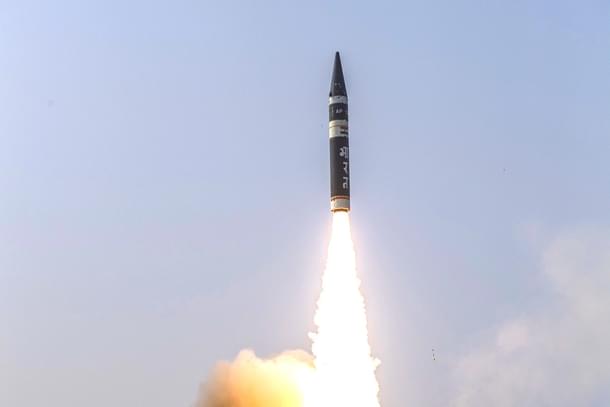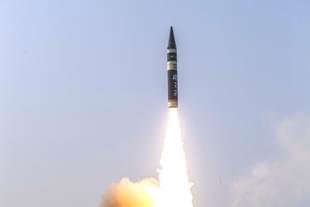News Brief
Agni Prime, India's New Generation Ballistic Missile, Successfully Flight-Tested By Strategic Forces Command, DRDO: All About It
Kuldeep Negi
Apr 04, 2024, 12:51 PM | Updated 12:51 PM IST
Save & read from anywhere!
Bookmark stories for easy access on any device or the Swarajya app.


India's Strategic Forces Command (SFC), along with Defence Research and Development Organisation (DRDO), on Wednesday (3 April) conducted the successful flight-test of New Generation Ballistic Missile 'Agni-Prime'.
The test was conducted from Dr APJ Abdul Kalam Island off the coast of Odisha at around 7 pm on Wednesday.
In a statement, the Ministry of Defence said that the test met all the trial objectives validating its reliable performance, as confirmed from the data captured by a number of range sensors deployed at different locations, including two downrange ships placed at the terminal point.
The launch was witnessed by the Chief of Defence Staff, Chief of Strategic Forces Command and senior officials from DRDO and the Indian Army.
Congratulating the DRDO, SFC and the Armed Forces for the successful test, Defence Minister Rajnath Singg stated that the successful development and induction of the missile will be an excellent force multiplier for the Armed Forces.
The missile is a two-stage and solid-fuel weapon system. It is an advanced variant of the Agni class of missiles with a range of 1,000-2,000 km.
The missile is fully made up of composite material, which has various advantages over conventional materials. Composites are lightweight, have better strength and offer more design and production flexibility over conventional materials.
Agni Prime comes in a canisterised configuration. Canisterisation significantly enhances the mobility of a missile.
In canisterised configuration, a missile requires very short preparation time and can be launched at short notice. Canisterisation also increases the reliability of a missile and its shelf-life.
In this configuration, a missile mated with a nuclear warhead is sealed in a canister, which is placed atop a road-mobile launcher.
Kuldeep is Senior Editor (Newsroom) at Swarajya. He tweets at @kaydnegi.





